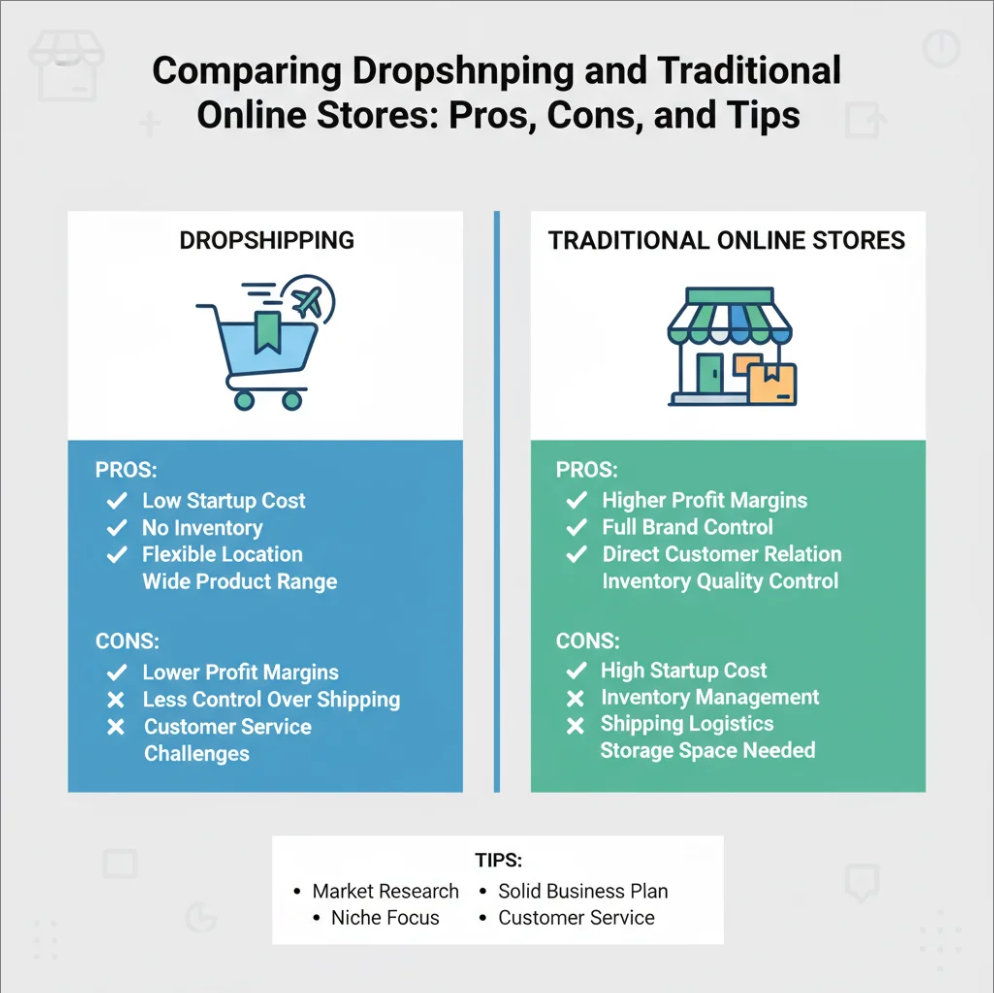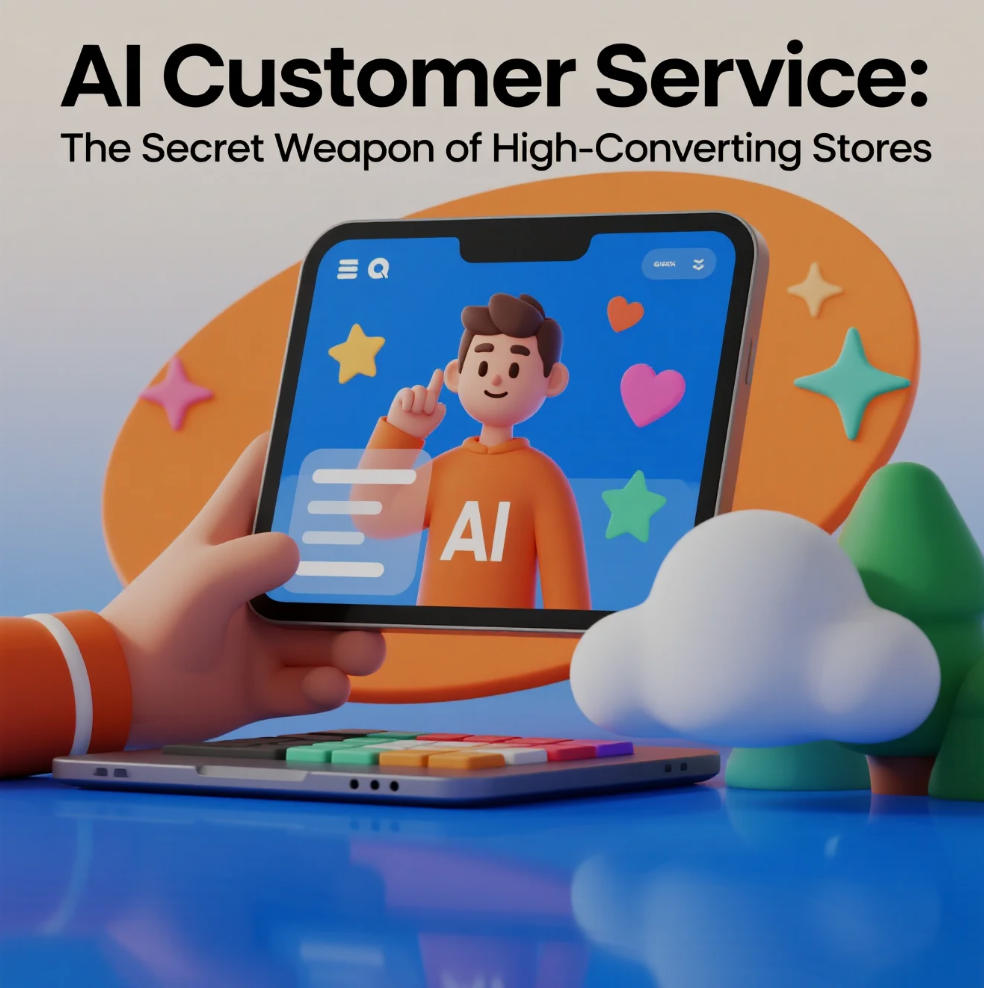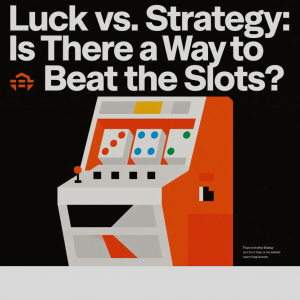Comparing Dropshipping and Traditional Online Stores: Pros, Cons, and Tips
E-commerce has opened endless opportunities for entrepreneurs worldwide. But when starting an online business, one major question arises: Should you go with dropshipping or build a traditional online store? Both models have their own strengths and challenges. Let’s break down the key differences to help you make the best decision for your business.
🛒 What is Dropshipping?
Dropshipping is a business model where you sell products without holding inventory. Instead, when a customer places an order, the product is shipped directly from your supplier to the customer.
Pros of Dropshipping:
- Low startup costs (no need to buy inventory upfront)
- Easy to start and scale
- Wide range of products available
- Flexibility in working from anywhere
Cons of Dropshipping:
- Lower profit margins compared to traditional stores
- Less control over product quality and shipping times
- High competition in popular niches
- Reliance on third-party suppliers
🏬 What is a Traditional Online Store?
A traditional online store typically involves buying products in bulk, storing them, and managing fulfillment yourself (or through a logistics partner).
Pros of Traditional Online Stores:
- Higher profit margins due to wholesale buying
- Full control over branding, packaging, and customer experience
- Ability to build long-term brand loyalty
- More flexibility in product customization
Cons of Traditional Online Stores:
- Higher upfront investment (inventory, storage, packaging)
- Risk of unsold stock
- More complex logistics and operations
- Requires larger team and resources as you grow
💡 Tips for Choosing the Right Model
- Assess Your Budget: If you want to start with minimal risk, dropshipping may be better.
- Consider Your Long-Term Goals: If you aim to build a strong brand, traditional stores provide more control.
- Test Your Market: Some entrepreneurs start with dropshipping to test demand, then shift to traditional models once profitable.
- Focus on Customer Experience: Regardless of your choice, prioritize fast shipping, clear communication, and quality products.
⚖️ The Bottom Line
Dropshipping and traditional online stores both offer unique opportunities in e-commerce. Dropshipping is ideal for beginners and those seeking flexibility, while traditional stores are better for entrepreneurs looking to build a long-term, branded business. The best choice depends on your budget, goals, and commitment to managing logistics.














Post Comment